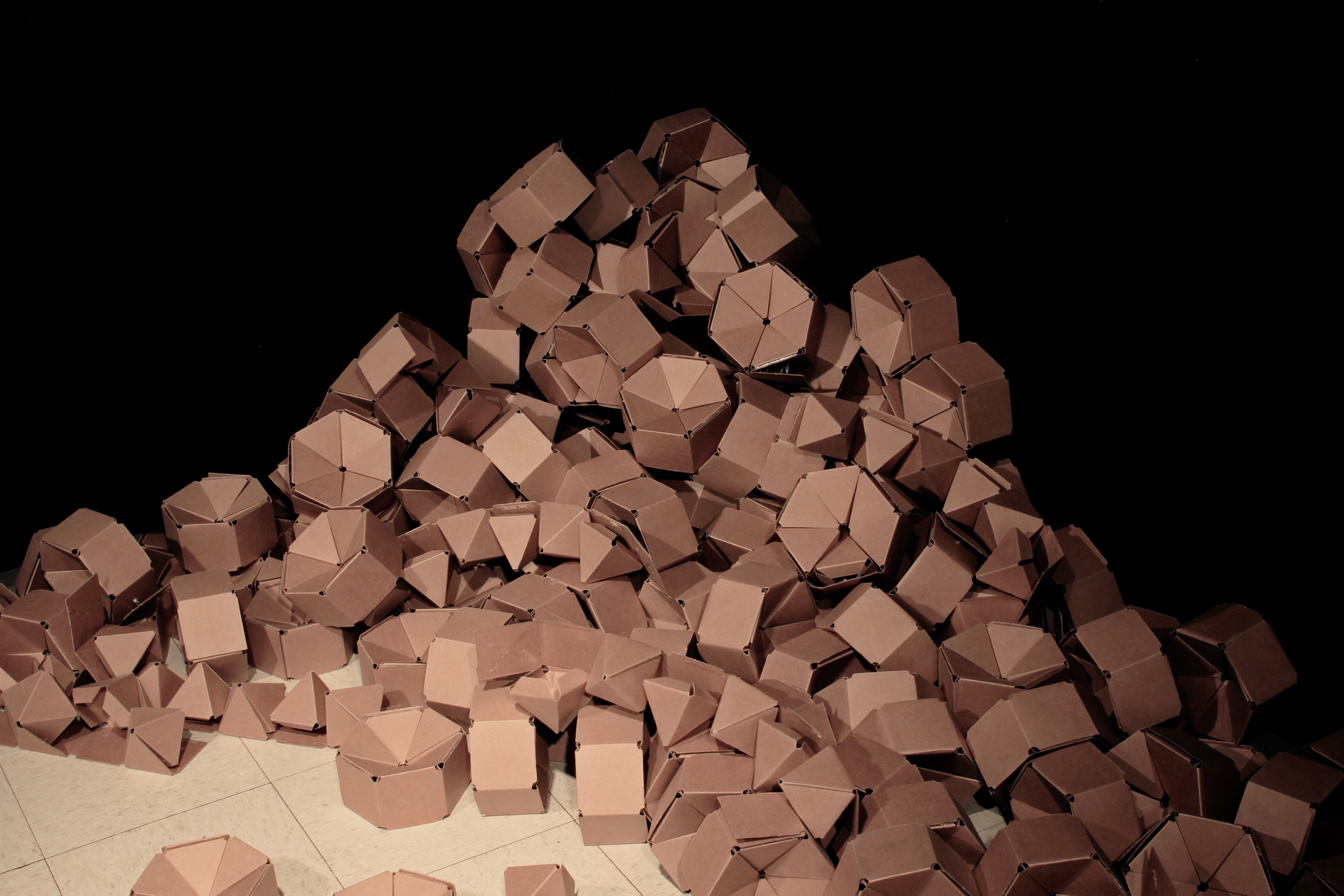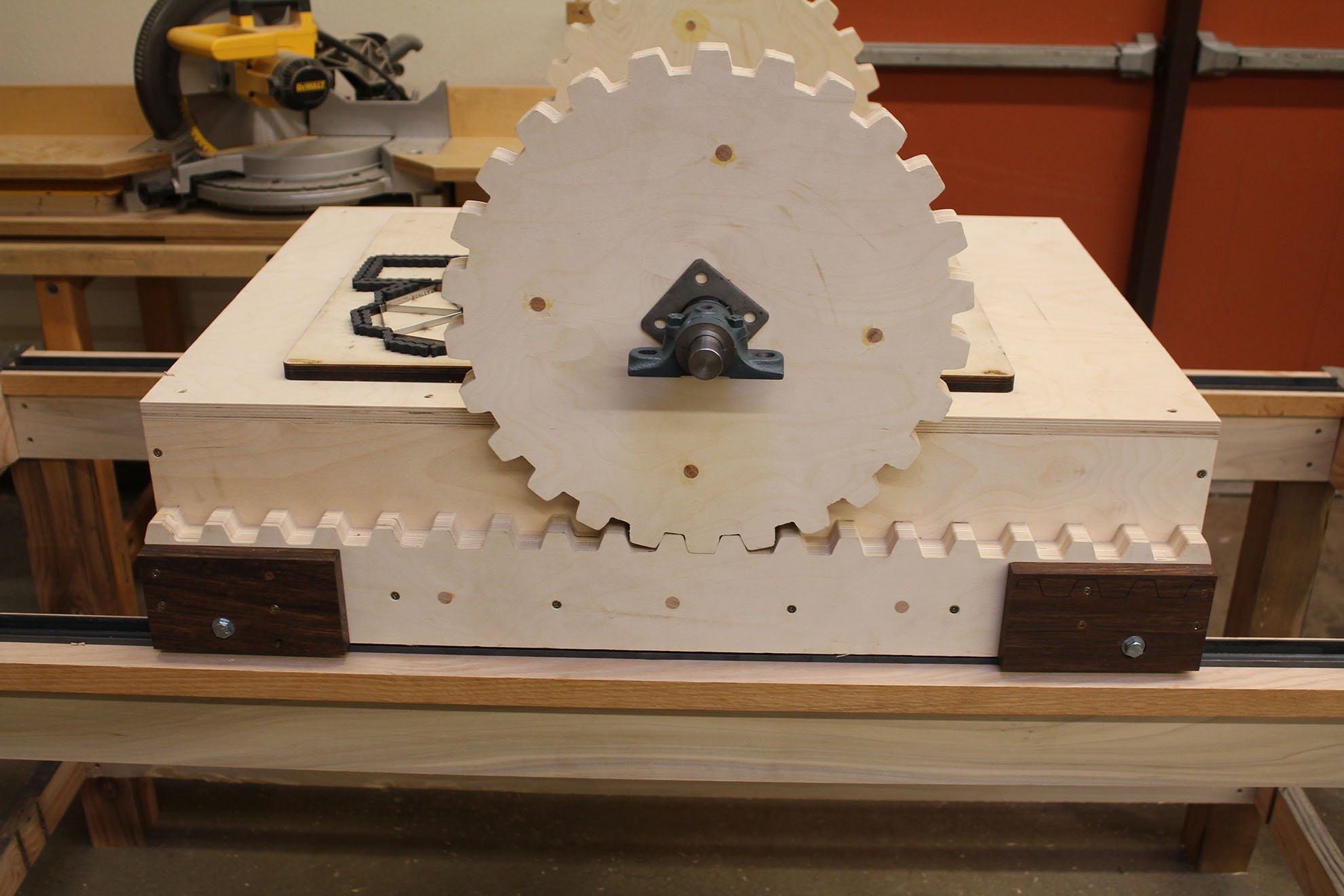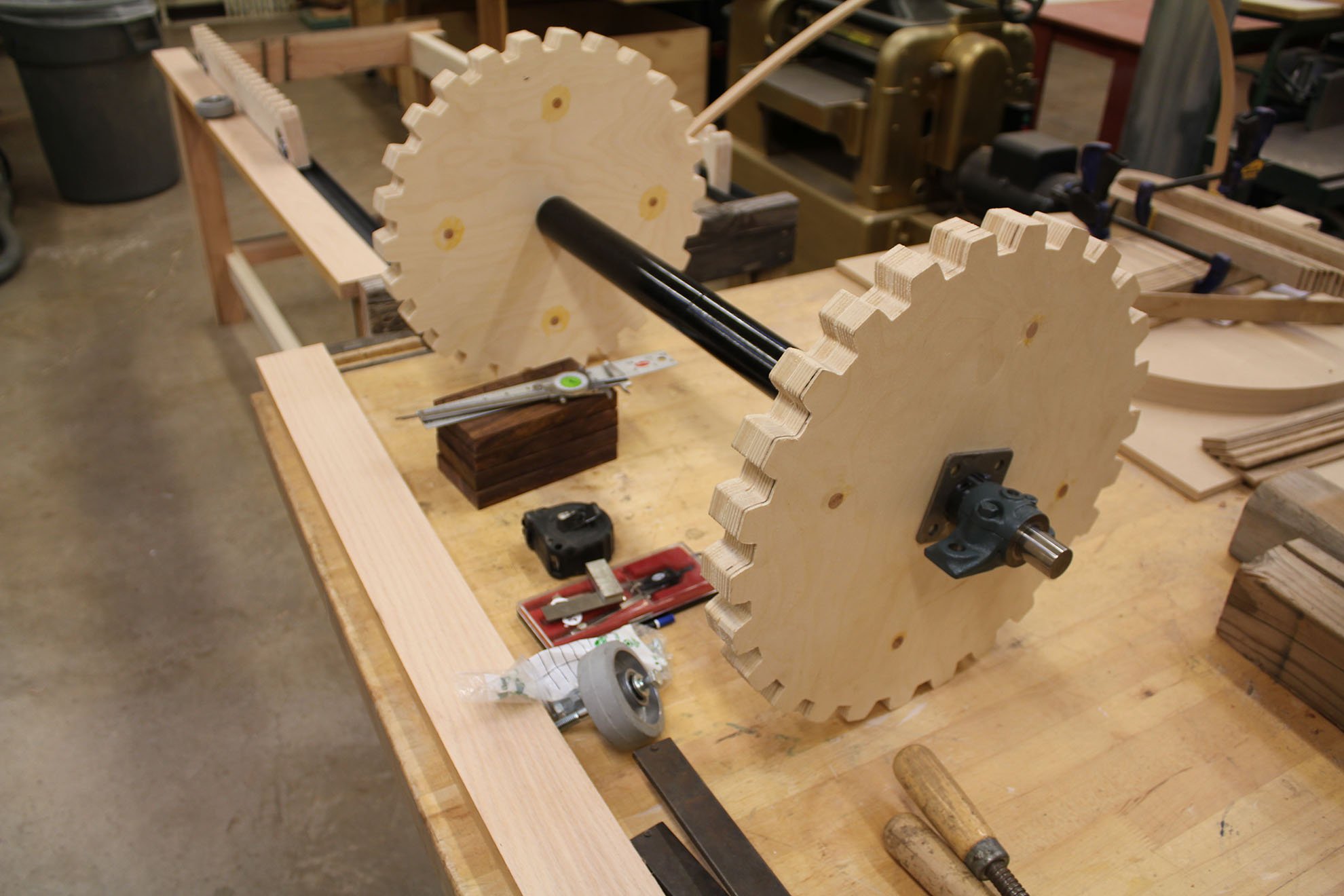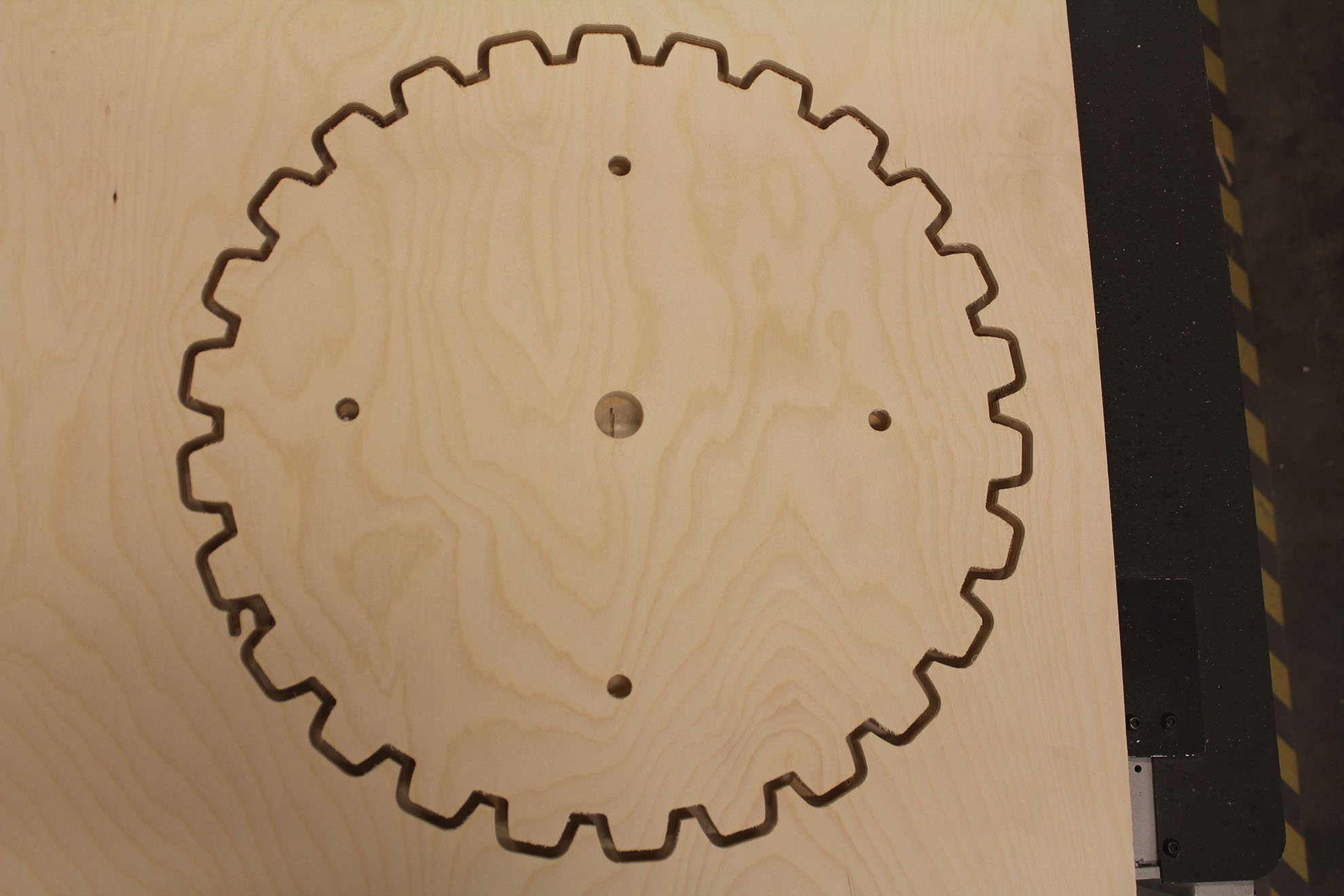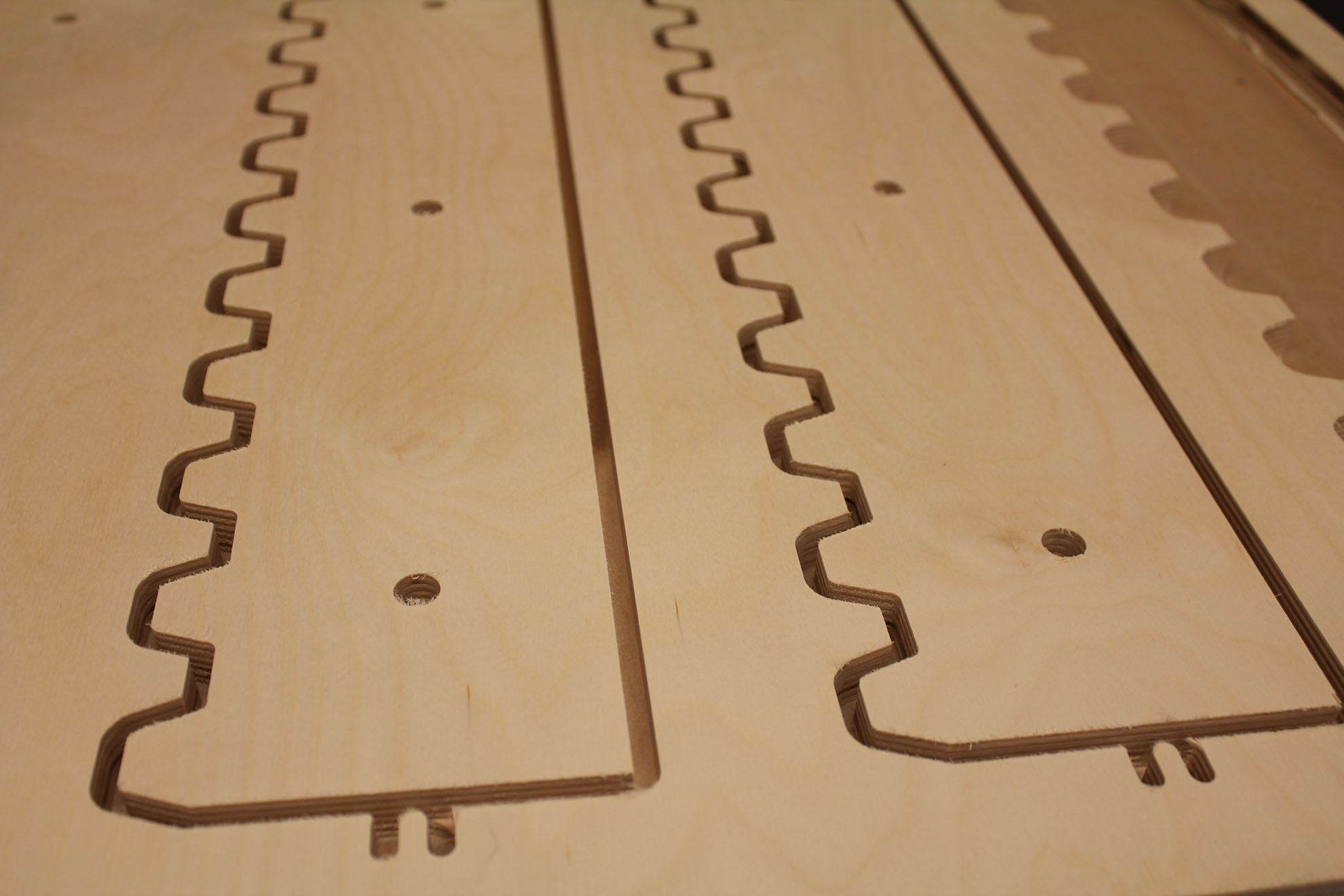
Dis·ci·pline
Tempe, Arizona - 2015 - Thesis Exhibition
Cast Bronze, Steel, Ash, Cocobolo, Bocote, Bubinga, Reclaimed Lumber, Redwood, Recycled Cardboard, Arduino, Sensors, Pumps, Mineral Oil.
The artworks in this exhibit were conceived as an all-encompassing experiment—an intentional departure from the conventional art show, where isolated objects sit upon whitewashed pedestals in sterile gallery spaces. This exhibition challenges that tradition, treating art not as static display pieces, but as dynamic, living systems—some reliant on human interaction, others functioning autonomously.
At the heart of the exhibit stands a centerpiece: a set of counter-opposing blades, driven by a system of fluid dynamics. Mineral oil, the lifeblood of the installation, is pumped from a concealed reservoir within the “pedestal” into suspended orbs, which serve as counterweights. As the system cycles, controlled by an Arduino microprocessor, one orb fills while the other drains. Once an orb reaches its capacity, the weighted blades descend in a decisive, slicing motion—gradually carving into the pedestal itself.
Designed as a life cycle in motion, the system perpetuates its own demise. With each cutting pass, the reservoir diminishes, and the piece inches closer to its inevitable death. As the final drops of mineral oil spill forth, the artwork ceases to function. A time-lapse video documented this transformation over two weeks, capturing the progression of the system until its ultimate demise.
Alongside the kinetic installation, the exhibit features a long-standing exploration of cardboard cells—a project I have been refining for years as a potential building material of the future. Beginning as flat sheets of recycled cardboard, each piece is processed through a hand-cranked press, which I personally designed and built for manual manufacturing. A custom die-cutting board imprints precise fold lines and separates the material from excess flashing.
Through a series of folds, the flat cardboard transforms into a hollow cellular structure with remarkable strength. These modular units, inspired by natural cellular formations, present endless possibilities for both macro and micro-scale applications. Whether considered for architectural frameworks, packaging solutions, or innovative sculptural designs, this mini truss technology offers a sustainable, adaptable alternative to traditional materials—limited only by the imagination.
This exhibit stands as a bold redefinition of art’s role—not just to be observed, but to be experienced, deconstructed, and reimagined.



